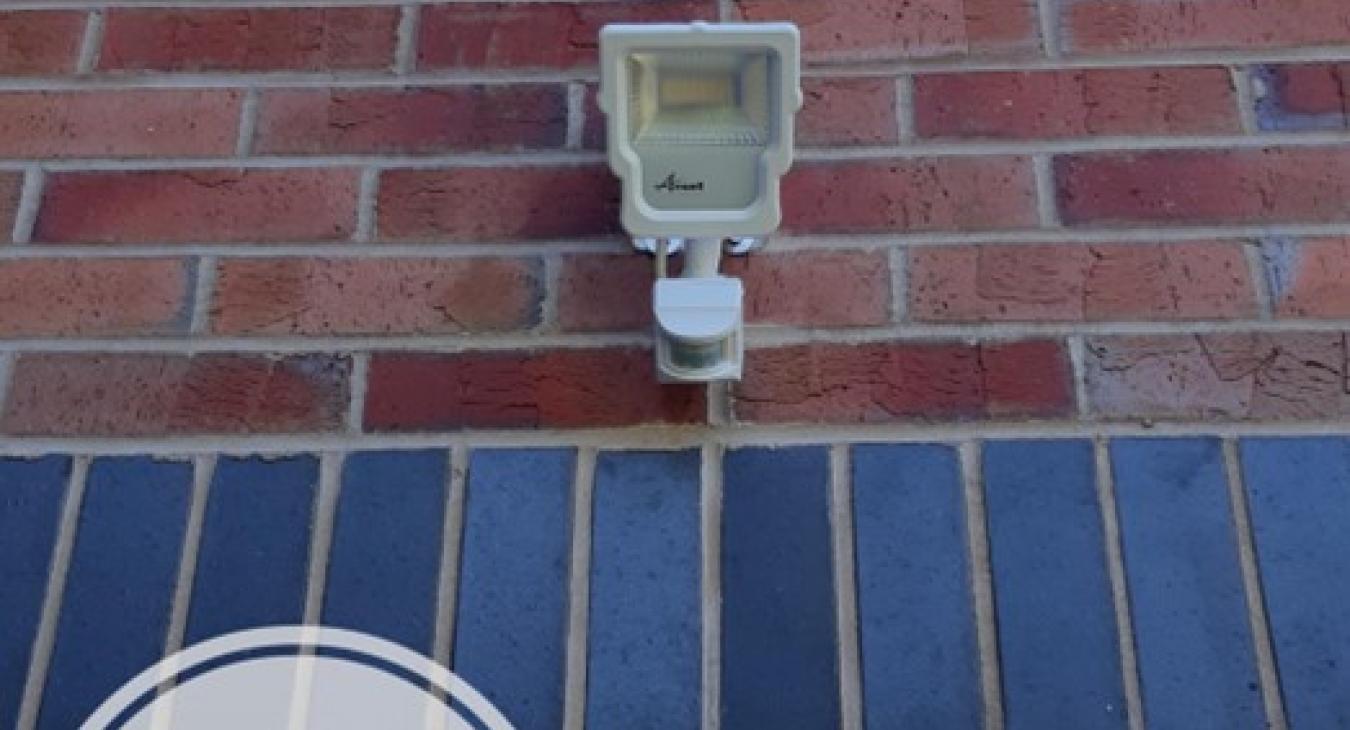
Table of Contents
- What must we consider before installing Outdoor Electrics?
- The age of the existing wiring
- The Standard of the Consumer Unit Installed
- The Sufficiency of the Earthing
- Earthing to Metal Pipework
- Cable Routes for New Wiring
- Safety of Existing Electrics
- What are the Reasons for Having Outdoor Electrics?
- Common Questions
Whether you love a summer barbecue, a spring evening with a drink on the patio or gazing out at your lights over the Christmas Period, it is almost impossible to fully appreciate these things without the use of outside electrical works to provide the power to your lights and music!
Back to top1) What must we consider before installing Outdoor Electrics?
There are some checks that need to be made before outdoor electrical wiring and equipment can be installed in a property. Your electrician will likely want to check over the various safety features of your system and may look at:
- The age of the existing wiring
- The standard of the consumer unit installed
- The sufficiency of the earthing
- Earthing to Metal Pipework
- Cable routes for new wiring
- Safety of existing electrics
Now we can explain in more detail which things are checked and why, let’s dive in.
Back to top2) The age of the existing wiring
If your existing wiring system is absolutely ancient then it’s not wise to begin adding further wiring and electrical equipment on to it. The existing electrical wiring may not be suitable or safe to extend in this way and it is one of things that electricians will look at before committing to the alterations for outdoor electrics.
In some cases, wiring may need to be replaced or rewired in order to make sure the electrical circuit is safe and suitable for alterations and extensions. In other cases, the electrician may wish to ‘ignore’ older electrical circuits and run a completely new electrical circuit from a new fuse box or consumer unit that they install alongside the older equipment. I have done this type of thing before myself.
This does not mean that any deficiencies or shortcomings in the safety of the existing electrical system are ignored by your electrician but does mean they do not have to touch or take responsibility for existing wiring that may be decades old!
Back to top3) The Standard of the Consumer Unit Installed
Consumer units are the brains of our electrical system and control the power to the electrical circuits in our home. It is vital that these devices are kept up to date, repaired, when necessary, regularly inspected by a professional and maintained correctly.
If you still have an old fuse box style unit then the chances are your electrician will be advising an upgrade or a separate consumer unit to run their new electrical circuit from. There is also a good chance that other parts of your electrical installation will need to be upgraded before any works can take place to add on to the system.
Electricians are not trying to be difficult by insisting on replacements and upgrades, we are following the wiring regulations which lay out in great detail, all the safety requirements for electrical installations and the various aspects that must be maintained and replaced in order to comply with safety. It’s actually a bit of a pain sometimes trying to explain to the customer why an outdoor socket is going to cost eleventy million pounds to install!! 😊
If your consumer unit is old, it should be replaced before new work is added on.
Back to top4) The Sufficiency of the Earthing
What is earthing? Well, it’s a path for stray electrical currents to head off to when things go wrong. Basically. Earthing is put in place in the electrical system to prevent YOU from electric shock.
If the earthing is not sufficient for the type and size of the electrical system then this must be updated and rectified before any work can take place on the electrical system under the wiring regulations. BS7671 Regulation 132.16.
The earthing connects all the metal cases of the appliances, the pipework, the radiators, the boiler, the socket, and switch fronts (if they are metal) and any other metallic parts that are connected to the electrical system TO EARTH. This means that if there is an electrical fault and an appliance decided to become live on its casework, the electrical system should disconnect very quickly (less than a second).
We want great big FAT earthing wires in our electrical system generally. The bigger the wires the lower the resistance and the better the path to earth. Your electrician will be able to discuss this with you and carry out any earthing upgrades that are required in accordance with the wiring regulations.
Older electrical systems had very thin insufficient earthing which may have been suitable at that time but are no longer suitable with today’s modern wiring and power demands. When adding on OUTDOOR ELECTRICS its vital that earthing is good and safe.
Back to top5) Earthing to Metal Pipework
Generally speaking, the earthing system should be connected to the metal pipework in your property. The requirement for this is specific to each building and can only be ascertained by a qualified electrician that carries out the required testing to see if it is necessary.
If your neighbour has earthing to their pipework then this means ABSOLUTELY NOTHING. Every installation is different and has to be treated as such.
Why do we need earthing to pipework? What are the chances of pipes becoming live?
Well, it’s not so much the pipes that may become live that are the problem. Metal pipework is a pretty good earth connection generally and if you were to touch a faulty appliance AND the metal pipework at the same time then there would be a voltage difference between the two things.
This voltage difference is a problem and will mean an electric shock or serious injury. If we connect the metal pipework to the rest of the earthing system in the house then we remove and potential difference in the voltage under fault conditions. Sorry, that was possibly boring but I promise I’m fun at a party. 😊
Back to top6) Cable Routes for New Wiring
When considering where the OUTDOOR ELECTRICS will be installed, your electrician will need to come and look at possible cable routes to get the power from your house and the consumer unit to the outdoors where you want the new equipment installed.
The easiest route is also normally the most inexpensive route and as such is preferred by customers and electricians alike. We, after all, like to be finished by noon on a Friday and down the pub to get a good seat for the evening. Longer cable routes will prevent an early finish and likely ruin the whole weekend for us.
Where easy routes are not possible then it is likely that walls may need to be chiselled, floors lifted or ceiling cut open in order to route cables where they need to go. Cable routes are one of the main things that an electrician will check before giving you an exact quote. Without knowing the planned route of the new cable, your electrician won’t know how much work is involved and the cost of that work.
Back to top7) Safety of Existing Electrics
Possibly the most important aspect we must consider before installing OUTDOOR ELECTRICS is the safety of the overall electrical system. If it has been a while since your electrics have been properly checked by an electrician then your electrician may recommend an electrical safety check before going ahead. This is beneficial for all involved and virtually eliminates the possibility of unseen wiring problems before starting the new job.
A thorough inspection beforehand will ensure that a condition report of the entire system is produced for you to see where you stand with the state of the electrical installation in your home. Issues that had previously been hiding can be exposed and dealt with to ensure your system is in tip top condition before and after works have been carried out.
This also provides you with peace of mind that your new outdoor electrical wiring is safe and installed on to a safe and correct electrical system.
Back to top8) What are the Reasons for Having Outdoor Electrics?
You may just want an outside socket installed to charge your phone and power your music system or you may want lots of outside lighting controlled by your phone to adjust to different colours depending on the mood of the evening and the atmosphere you want to create, power to ponds and waterfalls, sheds and garages, patios, decking, hot tubs.
There are many different reasons for outdoor electrical installations these days and your electrician can walk you through the process, give you some ideas and help you with your project.
Back to top9) Common Questions
9.1) Can I have as many outdoor sockets as I want?
You can have as many outdoor sockets as you want, no problem. It’s wise to discuss what you plan to use the outdoor sockets for with your electrician though. If you are planning on using several electric heaters outside for instance then you will need to discuss this with your electrician first!
Plugging in a few phone chargers at various points in the garden requires a lot less circuit design and installation cost than wanting several outdoor sockets for using electric heaters everywhere in the garden.
9.2) How Much Does It Cost to Have an Outdoor Socket Fitted?
As you have seen from the article above, the costs will vary quite considerably depending upon the age, condition, and type of electrical system that you currently have installed. The costs will also change depending upon how much work the electrician needs to do to get the electrical supply to your new outdoor sockets. Generally speaking, an outdoor socket fitted to a brand new or very modern electrical system requiring no upgrades, changes, or modifications, using a back-to-back installation method where power is taken from a socket immediately behind the intended new location.
The costs would be around £150. This should include the required testing of the circuit, the warranty and the electrical certificate for the work that was carried out. It is possible to pay less if you shop around but care should be taken that the work is completed correctly to the wiring regulations and certified as required.
9.3) How Much Does It Cost to Have a Garden Shed Powered Outdoors?
The costs will vary depending upon the installation method and system age amongst other things. Generally speaking, the following things reduce the cost:
- Brand new electrical system
- Close proximity of shed to existing electrical supply
- Limiting the number of electrical accessories that are required
The following things increase the cost:
- An older electrical system
- Farther distance of shed from electrical supply
- Wanting lots of lights, sockets, and hot tub supply
There is no ‘one price fits all’ scenario for OUTDOOR ELECTRICS as frustrating as this might be for many customers and I apologise.
Any contractor offering a special deal price should be asked under what circumstances this will be possible.
If you have any questions on outdoor electrics then just get in touch via WhatsApp or using our contact form.
Back to top











